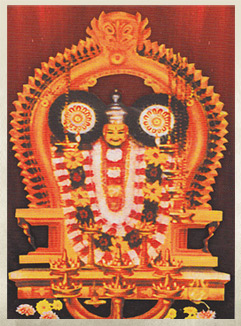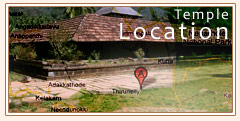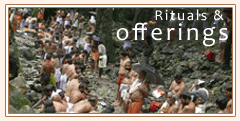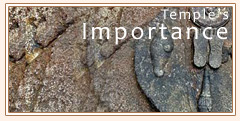Prathishta

Legend is that this temple was dedicated by Lord Brahma
to propitiate Lord Vishnu. The idol is in the form of Chathurbhuja
There are numerous legends about the origin of the temple. The most interesting one is that Lord Brahma (the Creator) while traversing the world on his swan got attracted by the bewitching beauty of the area. Then he landed on a hill which is later known as Brahmagiri. Lord Brahma while walking through the hills enjoying the tranquility and serenity of the surrounding hills, saw an idol of Lord Vishnu resting on an amla tree. Brahma realized that this abode of peace is nothing but Vishnuloka. This was confirmed by a disembodied voice. Soon he installed the deity with a request to Lord Vishnu that he should remain in this area to give peace to the human souls hounded by the thought of their sins. Lord Vishnu assured that the rivers around this temple would wash away the sins of human beings during their mortal life and life after death. Brahma entrusted two pious Brahmins of the Amalaka village, its keeping. He also instructed them that everyday he himself visit the place and do service to Vishnu. The puja
There are numerous legends about the origin of the temple. The most interesting one is that Lord Brahma (the Creator) while traversing the world on his swan got attracted by the bewitching beauty of the area. Then he landed on a hill which is later known as Brahmagiri. Lord Brahma while walking through the hills enjoying the tranquility and serenity of the surrounding hills, saw an idol of Lord Vishnu resting on an amla tree. Brahma realized that this abode of peace is nothing but Vishnuloka. This was confirmed by a disembodied voice. Soon he installed the deity with a request to Lord Vishnu that he should remain in this area to give peace to the human souls hounded by the thought of their sins. Lord Vishnu assured that the rivers around this temple would wash away the sins of human beings during their mortal life and life after death. Brahma entrusted two pious Brahmins of the Amalaka village, its keeping. He also instructed them that everyday he himself visit the place and do service to Vishnu. The puja
(worship)
in every shrine closes ordinarily at about 9 to 10 P.M. But in this
shrine, where the ordinary puja is done five times, from morning till
Night the priest prepares for a sixth puja before leaving the place.
On opening the doors next morning he finds that all the materials for
the puja have been utilised during the night. It was Lord Brahma who
performed the sixth puja when the animate and inanimate objects are in
deep slumber. This has been going on every day and will go on for
ever. The priest before entering the temple in the morning swears
thrice that he will not divulge what he sees there on opening the
door, and no priest dares to give out the secret at the risk of being
bitten by cobras emanating from the shrine.
Lord Brahma ordained that visits and prayers at the temple would
remove the sins and secure paradise. He also ordained that the
performance of prayers and ceremonies would lead to the perpetual
salvation of the spirits of the departed, to the world of “Pithurloka”
(region of blissful spirits). It is to attain this blessing,
pronounced by Brahma, pilgrimages are undertaken to the shrine.
The Gunnika temple on the western side is the abode of Lord Shiva. Thus all the members of the trinity Lord Vishnu, Lord Shiva and Lord Brahma are omnipresent here. Gunnika temple is embellished in the Kongu-Chera styles of handiworks. The belief is that, Gunnika was the abode of Lord Shiva and it was from here that he started to Kottiyur to kill Dhakshan, the father of Sathi Devi. After the ancestral rites at Pinnappara, pilgrims visit Gunnika temple also.
The Gunnika temple on the western side is the abode of Lord Shiva. Thus all the members of the trinity Lord Vishnu, Lord Shiva and Lord Brahma are omnipresent here. Gunnika temple is embellished in the Kongu-Chera styles of handiworks. The belief is that, Gunnika was the abode of Lord Shiva and it was from here that he started to Kottiyur to kill Dhakshan, the father of Sathi Devi. After the ancestral rites at Pinnappara, pilgrims visit Gunnika temple also.


